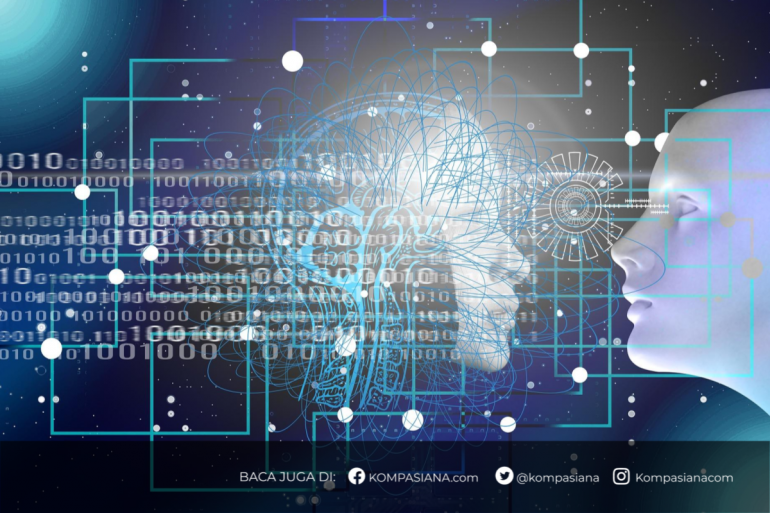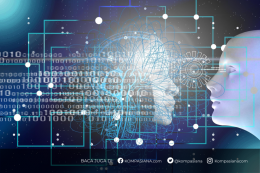Astronomy, one of the oldest and most fascinating fields of study, has always been at the forefront of human curiosity. With the vast expanse of the universe and the complexity of celestial objects, astronomical data can be overwhelming. In recent years, Artificial Intelligence (AI) has revolutionized the way astronomers analyze data, detect new objects, and expand our understanding of the cosmos. Let's explore how AI is transforming astronomy and its potential in future space exploration.
1. Introduction: The Role of AI in Astronomy
Astronomy has traditionally relied on human expertise and simple algorithms to study celestial objects. However, as technology advances, the volume of data collected from telescopes, satellites, and space observatories has grown exponentially. This massive data deluge demands new, more efficient ways of processing and analyzing information. This is where AI, particularly machine learning (ML) and deep learning (DL), plays a crucial role.
AI algorithms can process large datasets in a fraction of the time it would take a human, making it possible to detect patterns, classify objects, and predict celestial events more accurately.
2. Detecting Exoplanets: AI's Role in the Search for New Worlds
Exoplanet discovery is one of the most exciting areas in astronomy, and AI is making it possible to identify planets outside our solar system more effectively. The data collected by space telescopes, such as the Kepler Space Telescope, contains numerous signals that could indicate the presence of an exoplanet. However, the signals are often faint and challenging to detect amidst the noise.
AI uses neural networks to sift through vast amounts of data to find these subtle signatures. For example, a deep learning model trained on known exoplanet data can help astronomers identify new planets by detecting periodic dips in brightness when a planet passes in front of its host star.
Example:NASA's Kepler Space Telescope used AI models to identify more than 2,000 exoplanets. These models analyzed light curves to detect the tiny dimming caused by exoplanets transiting across their stars.
3. Gravitational Wave Detection: AI's Power in Capturing Cosmic Ripples
Gravitational waves, ripples in space-time caused by massive cosmic events like black hole mergers, are incredibly difficult to detect. Facilities such as LIGO (Laser Interferometer Gravitational-Wave Observatory) rely on extremely sensitive equipment to capture these faint waves, but the data is often plagued by noise.
AI has significantly improved the ability to detect gravitational waves by distinguishing between real signals and noise. Machine learning algorithms can quickly process the data, flagging potential gravitational wave events for further analysis.
Example:In 2015, LIGO's detection of gravitational waves from two merging black holes was enhanced by AI tools that filtered out environmental noise, making the detection possible.
4. Mapping the Sky with AI: Automating the Search for Celestial Objects
Astronomers have long used telescopes to scan the sky, searching for distant stars, galaxies, and other cosmic phenomena. However, manually analyzing images of the sky is time-consuming and prone to human error. AI is transforming this process by automating the classification and analysis of astronomical images.
Deep learning algorithms, especially Convolutional Neural Networks (CNNs), are used to analyze and classify images of galaxies, stars, and nebulae, identifying patterns that might otherwise go unnoticed. AI can also assist in creating detailed 3D maps of the universe by analyzing multiple images from different telescopes and satellites.
Example:Projects like the Sloan Digital Sky Survey (SDSS) have employed machine learning to catalog millions of galaxies, enabling a deeper understanding of the structure of the universe.
5. AI in the Search for Black Holes and Supernovae
Black holes and supernovae are two of the most enigmatic and violent phenomena in the universe. Detecting and studying these objects is a challenging task for astronomers. However, AI is enhancing our ability to spot black holes and supernovae from the vast amount of observational data collected by telescopes.
AI algorithms can classify supernovae by analyzing their light curves, allowing astronomers to differentiate between different types of supernovae and understand their origins. Similarly, AI can help identify black holes by analyzing the behavior of matter around them, such as gas accretion disks or gravitational lensing.
Example:The Event Horizon Telescope (EHT), which captured the first image of a black hole, relies on AI algorithms to analyze and enhance its images, producing clearer and more accurate results.
6. AI in Cosmology: Simulating the Universe
Cosmologists use simulations to understand the origins and evolution of the universe. AI plays a significant role in improving the accuracy and efficiency of these simulations by analyzing vast datasets and adjusting parameters in real-time.
Machine learning techniques are now being used to model the behavior of galaxies, dark matter, and cosmic structures. These simulations provide valuable insights into the large-scale structure of the universe and help refine our understanding of the Big Bang and the expansion of the cosmos.
7. Future of AI in Astronomy: Unlocking the Mysteries of the Universe
As AI continues to advance, its potential in astronomy is limitless. The integration of AI with telescopes, space probes, and observational systems will allow us to explore the universe with unprecedented precision and speed. In the future, AI may help us discover new types of celestial objects, predict cosmic events, and answer some of the most profound questions about the origins and fate of the universe.
Conclusion: AI as a Powerful Tool for Space Exploration
AI is not just a tool; it's becoming an indispensable part of modern astronomy. By automating complex tasks, improving data processing efficiency, and enabling new discoveries, AI is helping astronomers unlock the mysteries of the cosmos. As we continue to develop more advanced AI technologies, the possibilities for space exploration and discovery are boundless. The universe is vast, and AI will be the key to uncovering its secrets.
References:
NASA Exoplanet Exploration Program. (2021). "Exoplanet Discovery Statistics." Link
LIGO Scientific Collaboration. (2015). "Observation of Gravitational Waves from a Binary Black Hole Merger." Physical Review Letters, 116(6), 061102.
The Event Horizon Telescope Collaboration. (2019). "First M87 Event Horizon Telescope Results. I. The Shadow of the Supermassive Black Hole." The Astrophysical Journal Letters, 875(1), L1.
Follow Instagram @kompasianacom juga Tiktok @kompasiana biar nggak ketinggalan event seru komunitas dan tips dapat cuan dari Kompasiana. Baca juga cerita inspiratif langsung dari smartphone kamu dengan bergabung di WhatsApp Channel Kompasiana di SINI







